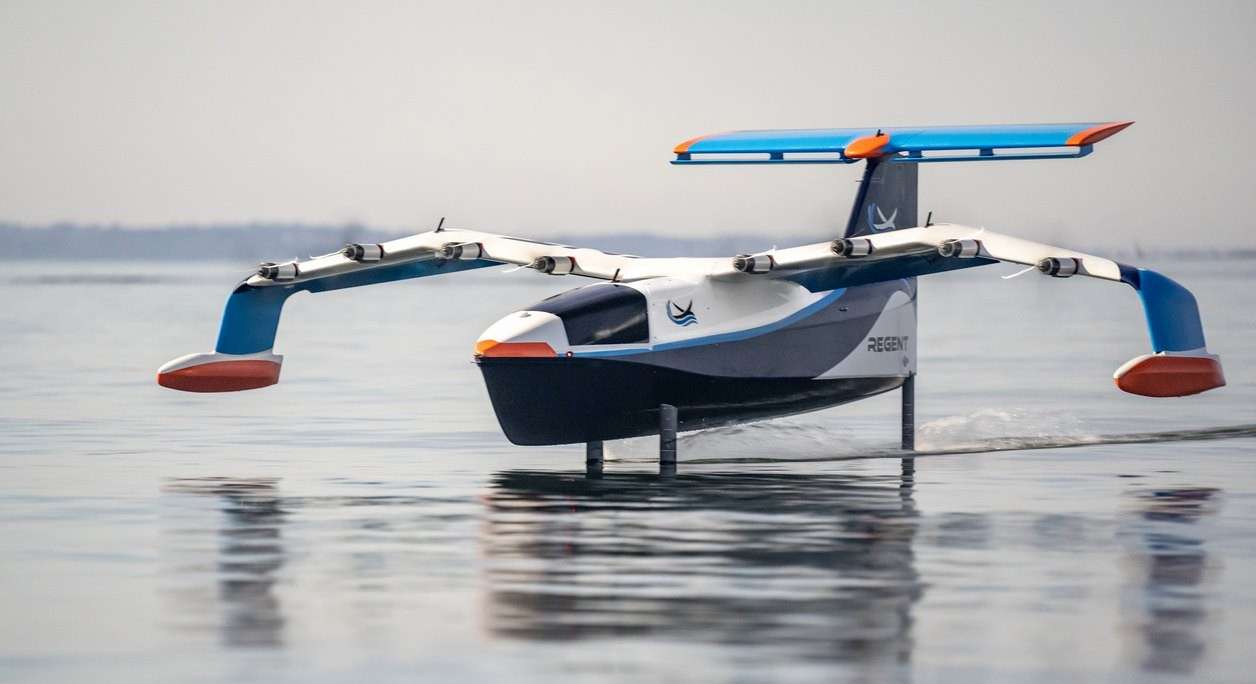Jet Fuel Derived From Used Cooking Oil Certified Airworthy for Large-Scale Production in China
Compared to traditional petroleum-based aviation kerosene, bio jet fuel can reduce carbon emissions by up to 50% the entire lifecycle.

An incredible hybrid high-speed yacht-seaplane vehicle has completed successful flight tests and is ready now for production.
Designed for sustainable maritime travel, the fully-electric seaglider operates a few meters off the water's surface on hydrofoils until it needs to fly.
Rhode Island-based company REGENT say it couples the high speed of an airplane with the low operating costs of a boat.
"With orders totaling over $7 billion, REGENT will commercialize seagliders for sustainable high-speed, regional mobility with first passengers boarding in 2025," the company stated along with the announcement that they achieved an initial series of test flights of the craft.
Their test was of a 1/4 scale model, and will now focus on developing the full-scale prototype with a 65-feet wingspan to start testing flights with passengers in 2024.
"People have been attempting to make [these] vehicles viable for 60 years, and in 15 months we have gone from a drawing on a napkin to the first successful flight," said Mike Klinker, REGENT CTO and co-founder.
With a range of 180 miles (290 km) and able to fly at 180 mph (290 kph), REGENT have plans to service coastal communities such as New York City and Tokyo.
By last year, REGENT's founders had raised almost $10 million from investors, which have included Mark Cuban and Peter Thiel.
"Seagliders will bring welcome relief for travelers seeking an alternative to traditional air travel servicing coastal communities such as New York City, the Hawaiian Islands, Barcelona, Tokyo, and many more worldwide," said Billy Thalheimer, CEO and co-founder of REGENT.
WATCH the Reuters News video showing electric planes taking off around the world, and continue reading below that… (NOTE: WS is not affiliated with any possible ads shown in this video.)
REGENT stresses that the last time a new mode of transportation was invented was the helicopter, and that the seaglider breaks this dry spell with it's first-ever utilization of three modes of maritime operation—floating, foiling and flying, in a single craft.
"40% of the world's population lives in coastal communities. These successful flights give us full confidence in our ability to apply this technology at full scale and bring seagliders to global commercial service by 2025."
The seaglider operates in three modes: from the dock, the vehicle first drives on its hull like a traditional boat.
As it leaves the harbor area and speeds up, it rises on its hydrofoil, a key maritime technology popularized by the America's Cup sailing competitions.
The hydrofoil offers significant wave tolerance and a smooth ride as the seaglider leaves a crowded harbor.
Upon reaching open water, the seaglider takes flight, retracting the foil and accelerating up to cruise speed—all while staying within a wingspan of the water's surface. This gives the advantages of numerous aerodynamic and operational efficiencies, enabling increased payload capability and greater range than other electric aircraft concepts.
WATCH more of the seaglider in action…
SHARE This Ultimate Maritime Transportation Breakthrough With Your Friends…
Be the first to comment